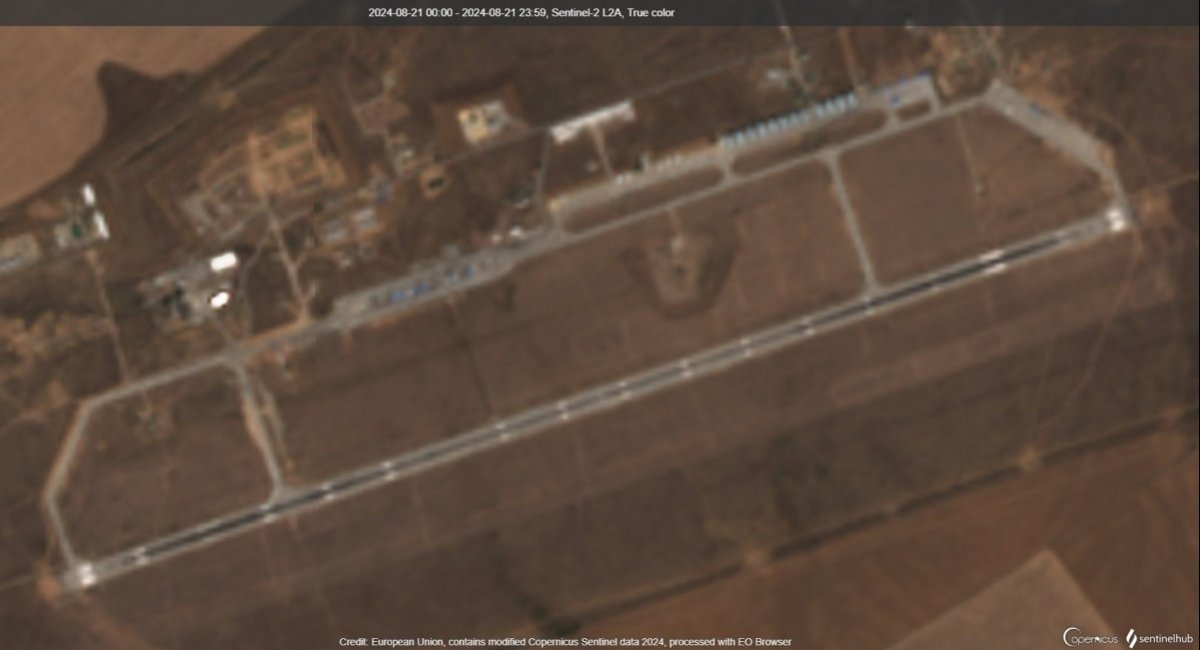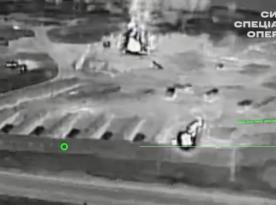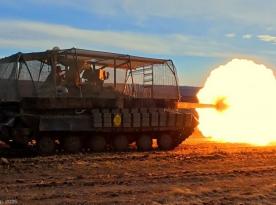Ukrainian Defense Forces continue a series of strikes against russian Aerospace Forces with a new drone attack on the Marinovka air base near Volgograd, 450 km from the frontline. In fact, it sits right between the borders with Ukraine and Kazakhstan, 270 km from the former and only 200 km from the latter, technically making it closer to Kazakh territory.
Moreover, of all the airfields near Ukraine, it's the only one where shelters for aircraft were recorded, these protective structures began to appear in November 2023 and were completely built by early 2024. Although, calling them "protective" might be an overstatement because rather than keeping the aircraft safe from attacks, these hangars in most likelihood can prevent harmful effects of bad weather at best, not the damage from fragmentation or spall. This is an important detail because, besides the primary explosive impact, the strike of Ukrainian drones made the nearby ammunition detonate.
Read more: russians Redeploy Aircraft from Olenya Air Base Due to Ukrainian Drones with Range of More Than 1000 km
Drones attacked the "Marinovka" airfield in Russia's Volgograd region. Local sources report that ammunition depots at the airfield began detonating, and people are being prepared for evacuation. FIRMS data suggest that not only ammunition but also aircraft might be burning. A… pic.twitter.com/bi6uR8Ai0j— NOELREPORTS (@NOELreports) August 22, 2024
Based on official statements, Ukraine spared no drones for this attack. The Ministry of Defense of russia reported 28 unmanned aerial vehicles were intercepted by air defenses across the country, including 13 in the Volgograd region specifically, and local authorities said "most" of the drones were shot down but some "debris" did fall on a military facility.
This "debris," however, turned out to be impactful enough to prepare the Oktyabrskoe village, closest to the airfield, for an emergency evacuation, as well as temporarily suspend all operations at the neighboring Gumrak civilian airport.
Relatively recent, satellite images of the Marinovka air base dated August 19 allow for a preliminary assessment of potential losses in russian aircraft. Despite the primary role of this airbase being to host Su-24MR reconnaissance aircraft, it there were also multiple Su-34 tactical bombers stationed on it a few days prior to the attack. In summary, 14 Su-24s (excluding the non-operational ones) and 15 Su-34s are visible.
Following the drone strike, NASA's fire monitoring service spotted ignitions at the airfield's apron. Accordingly, this attack might have caused serious damage to the aircraft park there. Notably, there is an ammo dump about 350 meters from this apron.
All in all, the outline of the situation is reminiscent of Ukraine's August 3 attack on the Morozovsk air base, where explosive drones destroyed an ammunition depot, took down one Su-34 and damaged at least two others. In addition, on the night of August 9, a long-range strike found an ammunition depot at the Lipetsk airfield, a base for Su-57 multirole jets, which are hailed as fifth-generation fighters, albeit in the russian federation only.
To date, one of the most effective is the August 16 attack on the Savasleyka air base: Defense Intelligence of Ukraine claims that one MiG-31K, two IL-76s were destroyed, and unofficial sources suggest six more MiG-31s were damaged.
Read more: Destroyed Ammo Depot at Morozovsk Airfield Highlights Secrecy of Ukrainian Drone Equipment














